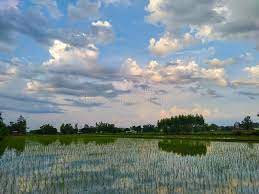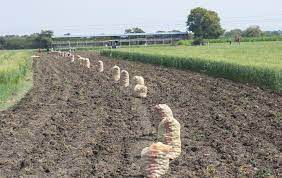CROPPING SEASONS OF INDIA
Introduction
About half of the total population is engaged in agricultural and allied activities in India. Various types of food and fibre crops, vegetables and fruits, spices and condiments, etc. constitute some of the important crops grown in the country. The contribution of agriculture in GDP is approx. 18%.
India has three cropping seasons- Kharif, Rabi and Zaid. Out of these three, Kharif and Rabi are two important seasons based on monsoon available. In between the rabi and the kharif seasons, there is a short season during the summer months known as the Zaid season.
Kharif Season
- The word kharif is derived from Arabic language means “Autmn”.
- Kharif crops are grown with the onset of monsoon in different parts of the country, hence also called monsoon crop and these are harvested in September-October. Overall time of kharif season is July to October.
- Such crops generally require more water.
- Important crops grown during this season are paddy, maize, jowar, bajra, tur (arhar), moong, urad, cotton, jute, groundnut and soyabean.
- Some of the most important rice-growing regions are West Bengal, Assam, coastal regions of Odisha, Andhra Pradesh, Telangana, Tamil Nadu, Kerala and along with Uttar Pradesh and Bihar. Now, paddy has also become an important crop of Punjab and Haryana.
- In states like Assam, West Bengal and Odisha, three crops of paddy are grown in a year. These are Aus, Aman and Boro.

Rabi Season
- The word Rabi is derived from Arabic language means “Spring”.
- Rabi crops are sown in winter (hence called winter season crops) from October to December and harvested in summer from April to June. However, the peak sowing time is October-November and harvesting time is February-April.
- Rabi crops need cold weather for growth and also need less water than kharif.
- Some of the important rabi crops are wheat, barley, peas, gram and mustard.
- Though, these crops are grown in large parts of India, states from the north and north-western parts such as Punjab, Haryana, Himachal Pradesh, Jammu and Kashmir, Uttarakhand and Uttar Pradesh are important for the production of wheat and other rabi crops.
- Availability of precipitation during winter months due to the western temperate cyclones helps in the success of these crops.

Zaid Season
- It is a short season during the summer months which, comes between the rabi and the kharif seasons. So, the sowing time is March-June.
- Requires warm and dry weather for growth and longer day for flowering.
- Some of the crops produced during ‘Zaid’ are watermelon, muskmelon, cucumber, vegetables and fodder crops. These are mostly seasonal fruits and vegetables.
Read also…
MAJOR CROPS IN INDIA- AN OVERVIEW
FACTORS AFFECTING CROP PRODUCTION
INTENSIVE FARMING-FEATURES, ADVANTAGE & DISADVANTAGE
FARM TYPES- AN OVERVIEW
FARM MANAGEMENT- DEFINITION & OBJECTIVES